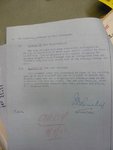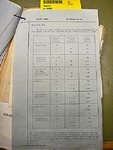pbfoot
1st Lieutenant
Some of the loss rates for night missions approached 10% if you include aircraft written off after landing , thats a lot of young guys gone with little visible results . It harkens to remember that the photo flash was used to ensure guys were dropping bombs on target rather then North Sea and then stooging around waiting to return with streamI stand corrected.
Does seem a lot like suicide though....



